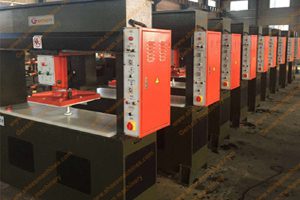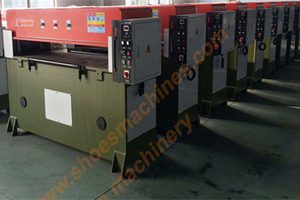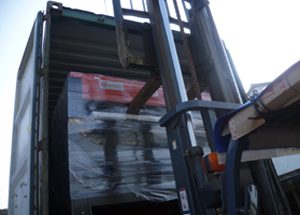This Article provides an in-depth analysis of fixed beam presses and movable beam presses, focusing on their design, functionality, and applications in industrial settings, particularly for die cutting and forming operations. The information is derived from manufacturer descriptions and technical specifications, offering a comprehensive overview for users seeking to understand the differences and choose the appropriate equipment.
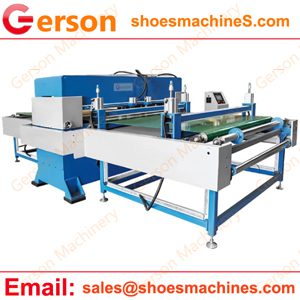
Fixed beam presses and movable beam presses are types of hydraulic or mechanical presses used primarily in manufacturing for cutting, punching, or forming materials such as leather, plastic, rubber, and textiles. These machines are essential in industries like automotive, footwear, and packaging, where precision and efficiency are critical. The distinction between the two lies in the movement capabilities of their beams, which impacts their suitability for different production needs.
Design and Structural Differences
The structural design of these presses is a key differentiator:
- Fixed Beam Press:
- The beam, often referred to as the upper beam or head, is fixed in its horizontal position relative to the frame. It moves only vertically to apply pressure, typically through a hydraulic cylinder.
- This design is akin to a standard hydraulic press, ensuring stability and precision for consistent cutting depth across large areas.
- Example specifications from manufacturers include cutting areas ranging from 500×500 mm to 2000×2000 mm, with cutting forces from 30 to 2000 tons .
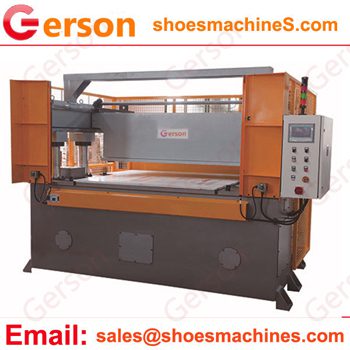
- Movable Beam Press:
- The beam can move both horizontally and vertically, allowing for dynamic positioning of the die over the workpiece. The horizontal movement is often described as forwards and backwards, fine-adjustable for material placement.
- This design is particularly useful for accommodating larger dies and handling materials in both sheet and roll forms. Specifications include cutting areas from 500×3000 mm to 3000×3000 mm, with forces from 25 to 2000 tons, and custom options exceeding 120 tons .
A detailed comparison of features is presented in the following table, based on manufacturer data:
| Aspect | Fixed Beam Press | Movable Beam Press |
|---|---|---|
| Also Called | Fixed head cutting machine, fixed beam press | Movable beam cutting machine |
| Description | Die cutting machine with fixed beam or head, most used for large area soft material die cutting | Beam cutting machine with movable beam, allows larger dies compared to other press types |
| Cutting Area (mm) | 1250×500 to 2000×2000, e.g., 1600×600 | 500×3000 to 3000×3000, e.g., 1600×800, can be same as bed cutting area |
| Max Cutting Force (Tons) | 30 to 2000 | 25 to 2000, can be custom made >120T |
| Features | 1. Double fuel tanks, precision four-post auto-balancing for same cutting depth. <br>2. Slow cutting on contact, no size error between layers. <br>3. Reduces knife mold and cutting plate loss. <br>4. Central oil supply for precision and longevity. <br>5. Optional: Auto feeding, conveyors, rollers, knock-out systems. | 1. Upper beam moves forwards/backwards, fine adjustable for material placement. <br>2. Cutting area same as beam/head, great for large dies. <br>3. Material stationary during receding cutting. <br>4. Larger head, bed, tonnage can be custom ordered (>1600×800mm bed). |
| Model | GRB(C)-25T to 2000T | GRH-40T to 2000T |
| Range Between Working Table | 50-240mm | 50-240mm |
| Stroke Adjustment | 0-170mm | 0-170mm |
| Motor Power | 1.5 to 22KW | 1.5 to 22KW |
| Electric Power | 220V/380V/415V, 50-60Hz | 220V/380V/415V, 50-60Hz |
| Net Weight (KG) | 1600 to 16500, 1700 to 17500 | 1600 to 16500, 1700 to 17500 |
| Material Application | Textiles,Leather,Rubber,Foam,Plastics,Paper and Cardboard,Composites,Cork,Abrasives,Gasket Materials etc., | Textile, Plastics, Rubber, Foam, Composites, Paper, Paperboard, Wood, Leather, Cork, Felt |
| Industry Products |
|
Gasket, Filters, Abrasives, Shoe Component, Sponge, Packing, Shoulder Pad, Caps, Linings, Shirt Collars, Box, Brassieres, Floor Mats, Carpets, Toys, Medical Supplies, Other Suitable Material |
Functionality and Operational Differences
The operational differences stem from the beam’s movement capabilities:
- Fixed Beam Press:
- The fixed beam ensures consistent cutting depth and is ideal for high-volume production where the material is brought to a stationary die. Features like double fuel tanks and precision four-post auto-balancing ensure uniformity, reducing errors between layers .
- It is particularly effective for cutting large pieces of both metal and non-metal materials in roll or sheet form, as noted by manufacturers like Gerson, ensuring large volume production capacity .
- Movable Beam Press:
- The ability to move the beam horizontally allows for fine adjustment of material placement, making it suitable for automatic cutting or forming operations. This is especially useful for handling both sheet and roll materials, with the material remaining stationary during receding cutting .
- Additional features include options for larger heads and beds, custom tonnage, and applications in diverse industries, such as textiles, plastics, and leather, with specific products like gaskets, filters, and shoe components .
Applications and Use Cases
The choice between fixed and movable beam presses depends on the production requirements:
- Fixed Beam Press: Best suited for scenarios requiring high precision and consistency, such as large-scale production of uniform parts. Its stability makes it ideal for cutting soft materials over large areas, ensuring minimal loss of knife molds and cutting plates.
- Movable Beam Press: Offers versatility for handling larger or varied workpieces, particularly in industries needing flexibility, such as automotive and footwear. Its ability to accommodate larger dies and adjust for material placement makes it suitable for a broad range of non-metallic materials, as seen in applications like medical supplies and carpets.
Safety and Technical Specifications
Both types share similar technical specifications, such as motor power (1.5 to 22KW) and electric power (220V/380V/415V, 50-60Hz), but movable beam presses often include additional safety features, such as hydraulic locking in the upper position during machine stops or die changes, as noted in descriptions from manufacturers like Gerson .
Key Differences:
- Beam Movement: The fundamental difference lies in whether the upper beam moves or remains fixed during the pressing operation.
- Application: Fixed beams are often for high volume cutting, and movable beams are often used for bending, and other forming opperations.
- Flexibility: Movable beam presses generally offer greater flexibility in terms of adjustable pressing parameters.
Conclusion
In summary, fixed beam presses are designed for stability and precision in high-volume, consistent cutting operations, with a stationary beam moving only vertically. Movable beam presses, with their ability to move horizontally and vertically, offer greater flexibility for larger dies and varied material handling, making them suitable for diverse industrial applications. The choice between the two depends on the specific production needs, with movable beam presses providing an unexpected advantage in versatility for handling a wider range of materials and sizes.
